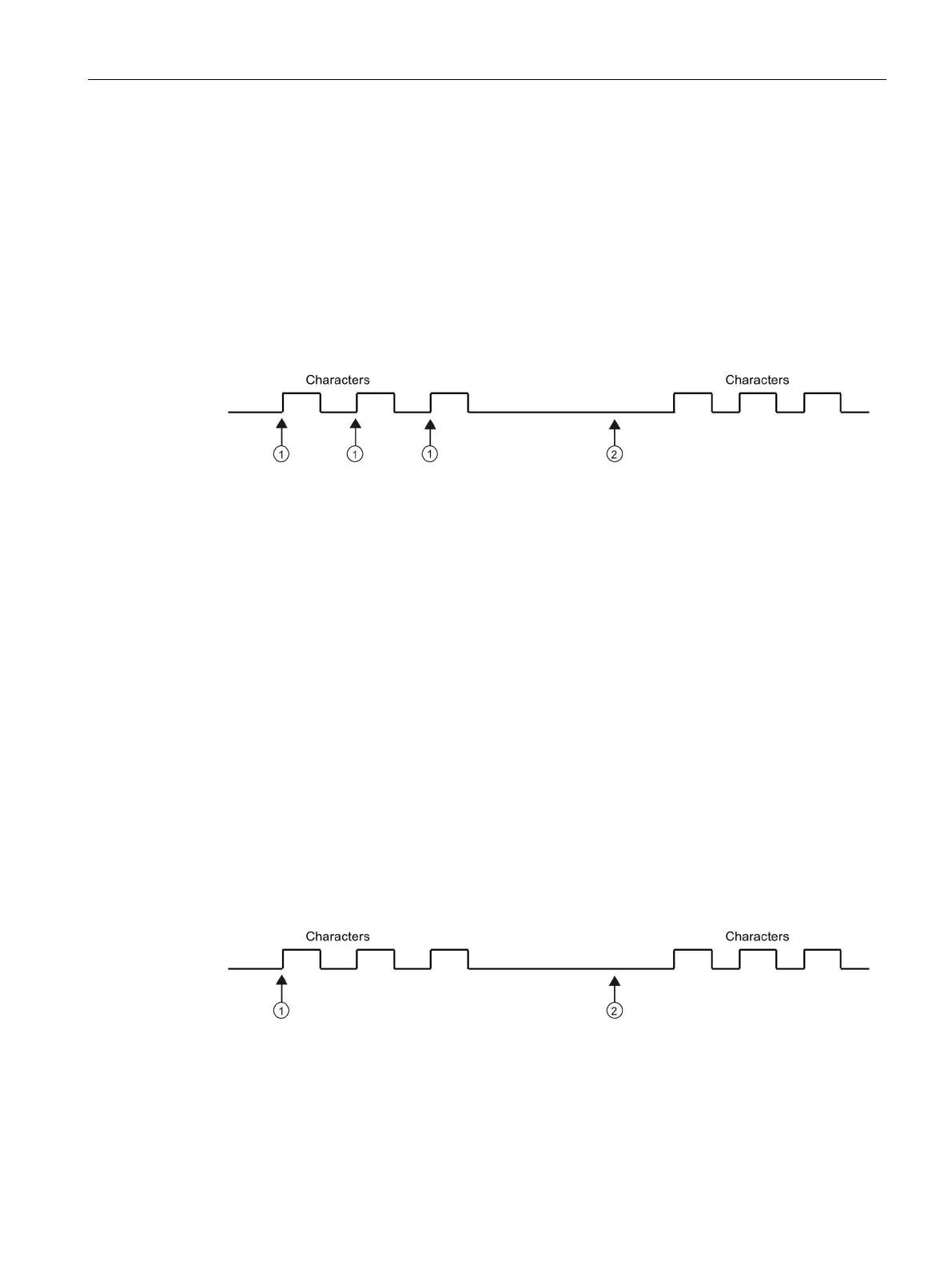Program instructions
7.3 Communication
S7-200 SMART
System Manual, 09/2015, A5E03822230-AC
187
You can use the intercharacter timer to terminate a message for protocols which do not
have a specific end-of-message character. This timer must be set to a value greater than
one character time at the selected baud rate since this timer always includes the time to
receive one entire character (start bit, data bits, parity and stop bits).
You can use the intercharacter timer in combination with the end character detection and
the maximum character count to terminate a message.
Setup: c/m = 0, tmr = 1, SMW92/SMW192 = timeout in milliseconds
Restarts the intercharacter timer
The intercharacter timer expires: Terminates the message and generates the Receive mes-
3.
Message timer:
The message timer terminates a message at a specified time after the
start of the message. The message timer starts as soon as the start condition(s) for the
receive message function have been met. The message timer expires when the number
of milliseconds specified in SMW92 or SMW192 has passed. See the following figure.
Typically, you use a message timer when the communications devices cannot guarantee
that there will not be time gaps between characters or when operating over modems. For
modems, you can use a message timer to specify a maximum time allowed to receive the
message after the message has started. A typical value for a message timer would be
about 1.5 times the time required to receive the longest possible message at the selected
baud rate.
You can use the message timer in combination with the end character detection and the
maximum character count to terminate a message.
Setup: c/m = 1, tmr = 1, SMW92/SMW192 = timeout in milliseconds
Start of the message: Starts the message timer
The message timer expires: Terminates the message and generates the Receive message

